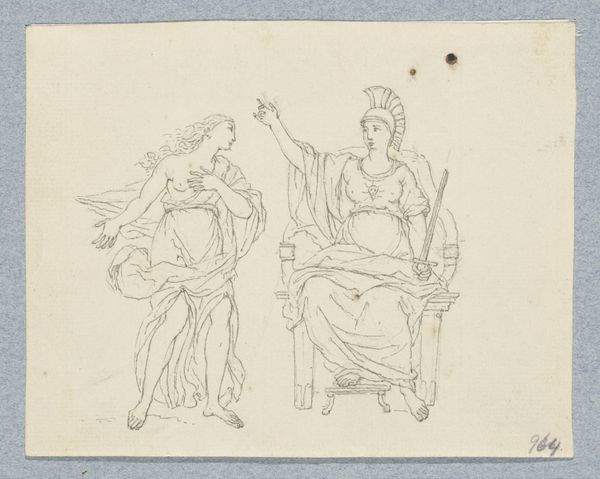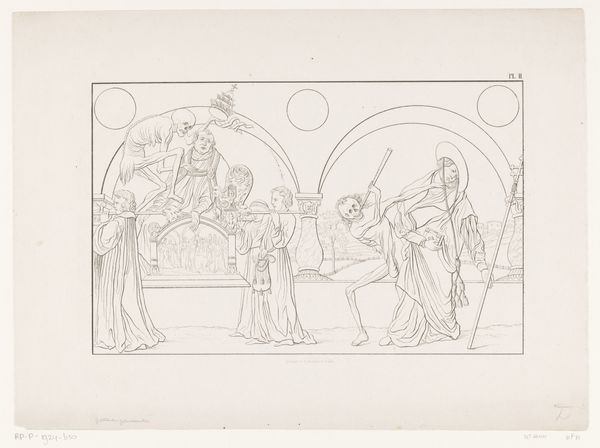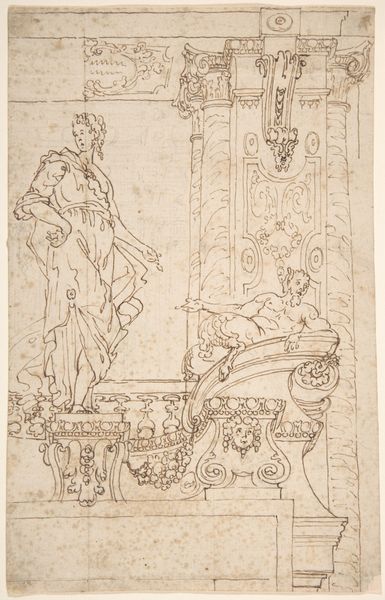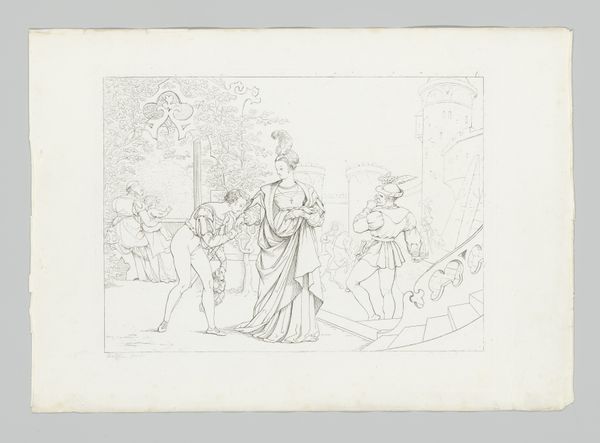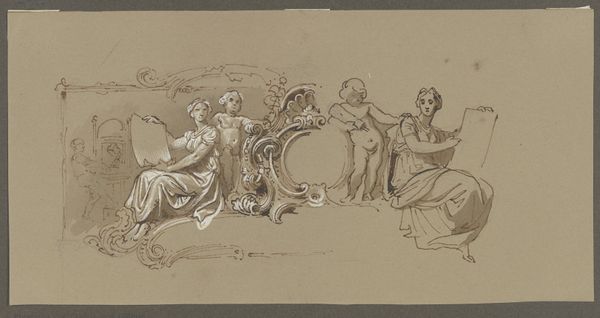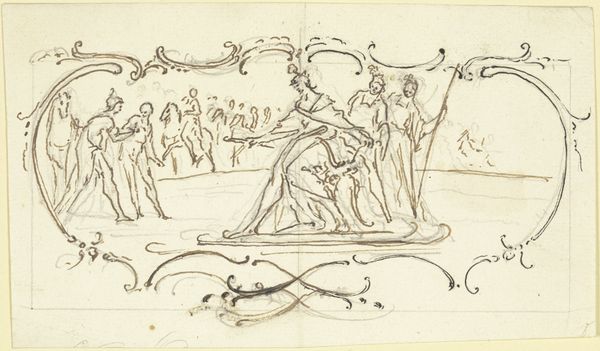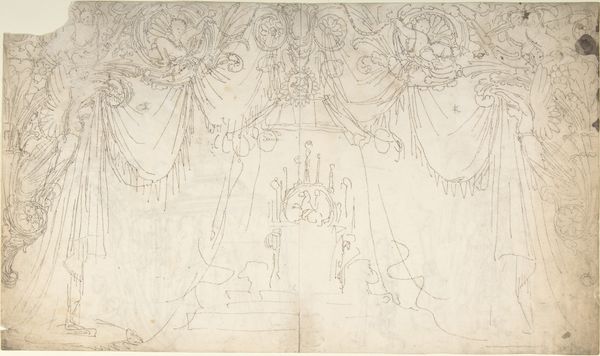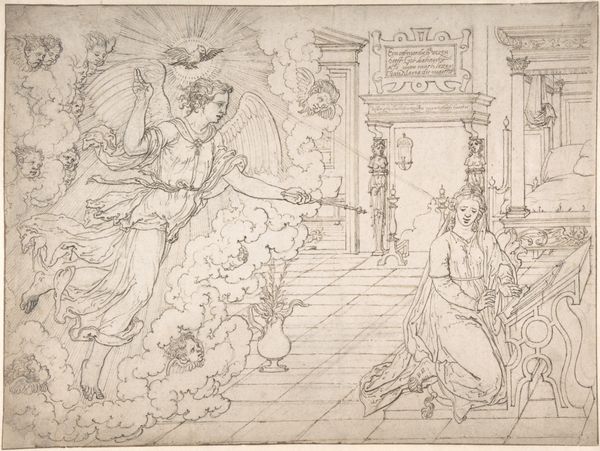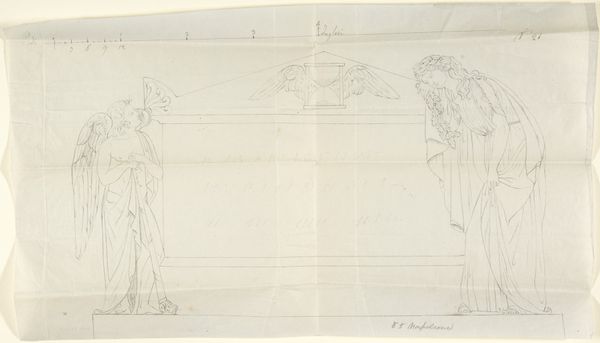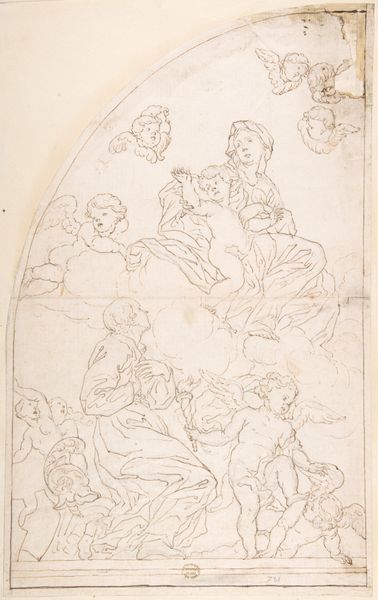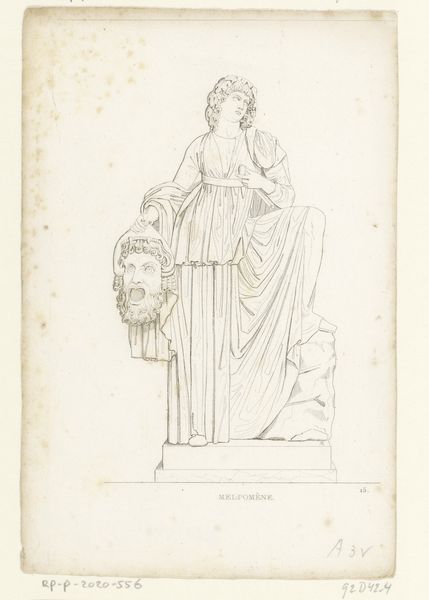
drawing, paper, ink
#
portrait
#
drawing
#
imaginative character sketch
#
neoclacissism
#
light pencil work
#
allegory
#
narrative-art
#
pencil sketch
#
greek-and-roman-art
#
sketch book
#
classical-realism
#
figuration
#
paper
#
personal sketchbook
#
ink
#
idea generation sketch
#
sketchwork
#
sketch
#
costume
#
line
#
sketchbook drawing
#
storyboard and sketchbook work
#
fantasy sketch
Copyright: Public domain
Curator: This drawing, "To Phoebus at His Birth, from Aeschylus, Furies", is attributed to John Flaxman. It’s rendered in ink on paper. Editor: My first thought? Serenity. Despite the drama of the title, it feels peaceful, like a lullaby visualized. The light, flowing lines contribute to that, almost weightless. Curator: Flaxman was a key figure in the Neoclassical movement, deeply influenced by classical antiquity. He's known for his outline illustrations for Homer, Dante, and Aeschylus, works intended for mass reproduction, aimed at broader consumption beyond elite circles. Editor: Ah, that makes sense. I can feel the echoes of ancient Greek art, the clean lines and focus on the human form, stripped down to its essence. It's like looking at a vase painting given breath. But still retains the quality of being hand-drawn; its very gentle, as though the artist breathed the figures on to the paper. Curator: Flaxman’s approach to narrative was revolutionary, stripping down details to emphasize linear forms. This approach reflects broader shifts in book production, making art more accessible, which changes the means for the consumption of these allegorical works. Editor: And there is more narrative here than might at first meet the eye, once one begins to observe it and contemplate all that space in the background, beyond what appears in the foreground. It evokes so many unspoken possibilities, suggesting an allegorical journey taking place across great distances of geography, or maybe of consciousness. This is a really interesting take on motherhood. I mean, that reclining figure, she’s the heart of the whole drawing! Curator: Her garments, even the lyre that the other woman carries... they’re reduced to their most basic elements, conveying form and movement through the fewest possible lines, an elegant efficiency reflecting the economies of scale he embraced. The artist is doing exactly what the woman on the chaise longue is doing: being very calm and efficient and at ease with one’s self! Editor: It's more than just efficiency though. It's almost as though the whole scene wants to float upward, into a different dimension. It hints to us what it’s like to exist beyond one’s given body and be supported and adored by angelic figures. What an uplifting thought to leave our listeners with, don’t you think? Curator: Absolutely. A beautiful insight into how materials, context, and artistic vision intertwine!
Comments
No comments
Be the first to comment and join the conversation on the ultimate creative platform.

